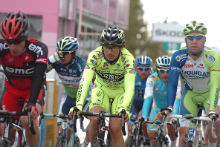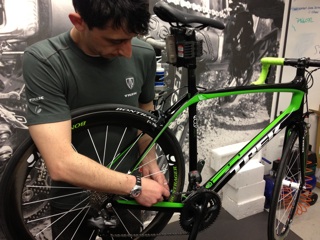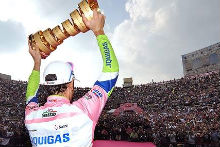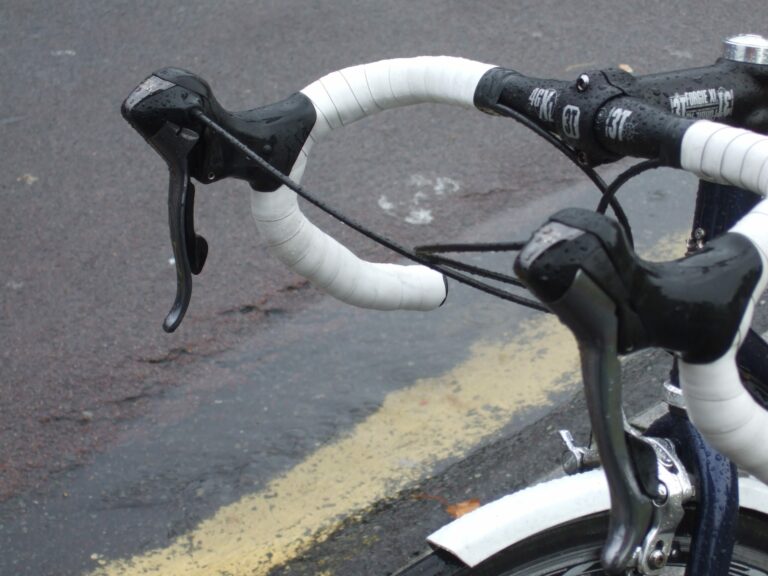The sprint is a key weapon in the arsenal of any competitive cyclist.
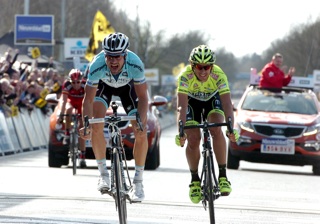
The flat stages of the Grand Tours are routinely decided by the peloton’s sprint specialists, hauled to the line by well drilled sprint trains. Closer to home, the city centre criteriums of the Halfords Tour Series frequently play to the strengths of riders capable of delivering an explosive burst of power at the end of an hour of intense racing. And the most successful of the Classics hardmen are those with a sprint to match their strength: contrast Boonen’s victory this year at the Tour of Flanders with Cancellara’s defeat at Milan-San Remo.
With the club season gaining momentum, a look at the requirements of a good sprinter seemed timely. We asked Peter Kennaugh senior, a mainstay of the Isle of Man cycling scene and coach for the 3LC series of training DVDs, an early influence on the career of the world’s fastest sprinter, Mark Cavendish, and Dave Lloyd, lead out man for former world road race champion, Jan Raas, in the legendary Ti Raleigh team of the 1970s, and now a respected coach, for their insights into what makes a great sprinter and for tips on how all of us can improve our sprints.
The common belief that sprinters gain their speed solely from an accident of birth – that they are ‘born’ and not ‘made’ – is dismissed both by Kennaugh and Lloyd. “No-one is ‘born’ anything,” says Lloyd. “You can become better by working. I was never a good sprinter until I turned pro and needed to make money. I turned into a good sprinter, but I had to work at it. I couldn’t sprint for toffee as an amateur.”
But aren’t sprinters simply equipped with a physiology to deliver power, specifically a greater development of so called ‘fast twitch’ muscle fibres? “You read a lot about are fast twitch muscle fibres, and of course that does make you a sprinter,” says Kennaugh, “but I do believe that someone with slow twitch muscle fibres, your endurance guy, can with training improve their sprint. It really does work. Probably ninety per cent of the guys I work with are slow twitch guys. You’re working on things to give them an advantage, like reaction time.”
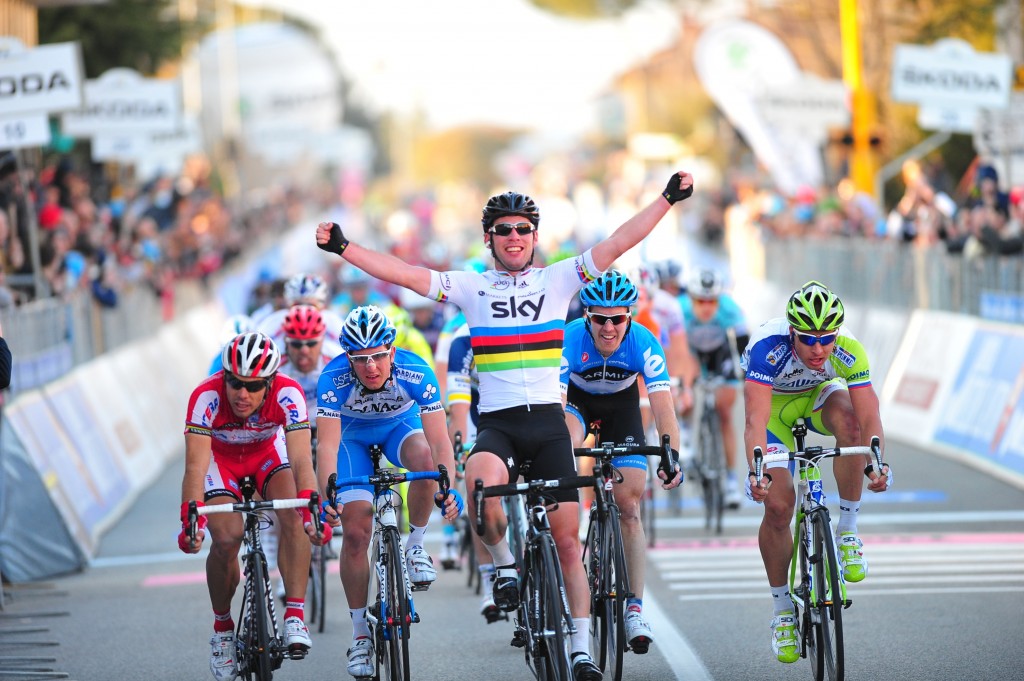
The ability to react quickly is one of many sprint qualities held by the Isle of Man’s most famous son. “Cav always wanted to win,” says Kennaugh. “OK, he’s the fastest guy in the world, but my view is that he’s got this raw desire to win all the time, and he’s disappointed if he doesn’t. You could see that in him from the early days. You just knew he was something special.” Lloyd cites Cavendish’s victory in the 2009 Milan-San Remo as evidence of the Manx Missile’s ability to seize the initiative. “The win at San Remo was unbelievable. I’ve never seen anything like it. He’s so instinctive. He gets a gap very, very quickly.”
Kennaugh believes that reaction time can be taught, and says gaining a yard on the opposition can be as important as raw sprinting power. Lloyd highlights the element of surprise in a race situation where hesitation among a group of riders, typically after a hill has been crested, or in the closing stages of a race, can offer an opportunity for the alert rider with a sprint. “Breakaway groups slow up with one kilometre to go and start looking at each other. You can take them by surprise. There is no point attacking off the front. You’ve got to leave off and create a small gap – maybe two lengths. If the wind is right, you can attack early,” says Lloyd.
Sprinters are often powerfully built, boasting upper body strength to complement their leg power. German road sprinters Andre Greipel (Lotto Belisol) and Marcus Kittel (Argos Shimano) are good examples of the breed; track specialists, Sir Chris Hoy and Robert Förstemann are similarly mesomorphic. Lloyd says he worked regularly in the gym to develop upper body strength while riding as a professional, and asks his clients to do the same. “When you’re sprinting, you’re using your arms, your shoulders, your back. Everything goes into a sprint. You have more control over the bike if your upper body is strong. The stronger you are, the more you can control the bike. I tell my guys not to throw the bike all over the place, but to concentrate on sending power to the back wheel.”
For Kennaugh, power to weight ratio is of greater importance to a sprinter than bulk. He cites the sizes of Cavendish and Greipel and the relative success of each.
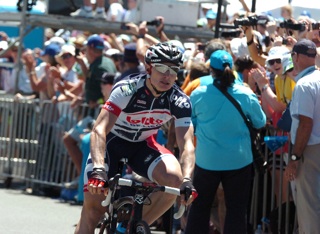
“Andre Greipel is twice the size of Cav and probably produces more watts, but because Cav is lighter he has a better power to weight ratio and he’s faster most of the time,” he says. Kennaugh compares the upper body’s role in a sprint to that played when putting on a wellington boot: pulling on the bars to counterbalance the downward force on the pedals, to keep the bike steady.
Kennaugh recommends a range of sprint drills: sprinting up short hills, selecting a higher gear and going flat out for about 20 seconds; accelerating hard in the saddle for downhill sprints; practicing lead outs and sprints by swapping ‘man one’ and ‘man two positions’, and a dropping off the back of a group for about 30 seconds and sprinting to get back on. Lloyd recommends gradients of between seven and 10 per cent for to practice hill sprints. Neither supports sprinting for road signs. “Sign sprints can be dangerous,” says Lloyd. “You have to use a bit of common sense. I’ve seen guys killed doing that kind of thing. I see them on a Sunday, sprinting for the café: they’re all over the road.”
While spinning a lower gear at a high cadence gained much in popularity from the success of Lance Armstrong, such a technique is utterly unsuited to the sprinter, says Lloyd. “Turn the biggest gear you can get going! It’s all about power,” he advises. “Cipollini turned out about 2,000 watts. These are huge guys. They are putting down huge power. You see Cav going for a sprint: he’s low, he’s all over the bike. He’s giving it a 110 per cent. There’s not that much finesse. It’s all about brute strength.”

